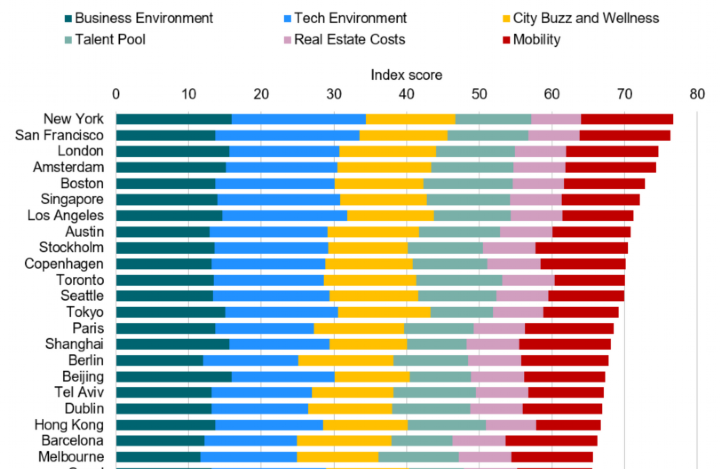It is no doubt that our society today cannot live without touching some forms of technology. An example? Try to drive on the Hanoi – Hai Phong Highway and instead of receiving tickets from a collector before entering the Highway, you will just have to push on the big red button, grab the card, and go.
Thus, “Digital Government” has been a top requirement that our leaders have set for development, especially for the two leading cities Hanoi and Ho Chi Minh. To do so, it is essential to establish tech cities as the foundation to nurture the development and application of technology in every corner of the government and the nation as a whole.
One might hear this term occasionally but what exactly are “tech cities”?
According to Savills, a tech city is an important tech hub assessed under six categories: (1) Business Environment; (2) Tech Environment; (3) City Buzz & Wellness; (4) Talent Pool; (5) Real Estate Costs; (6) Mobility. These categories are comprised of many factors and sub-factors and basically, they focus on measuring how well a city creates tech vibe and an innovation-oriented environment.
But why are tech cities worth mentioned? First and foremost, a tech hub attracts talents, not just regionally but also globally. There is a reason Silicon Valley is known worldwide: Most tech talents across the world want to go there to work and compete. In that highly competitive environment, only the best thrives and as a result, they continuously create new talents, new innovations, new businesses, and new products that can change the world.
That leads to the second point: Capital. Because when strong brains get together under the same roof, they are capable of making valuable products and attracting money both purposefully and naturally. This money raises the living condition to a higher level, and then the high living condition continues to attract more talents. This explains why Silicon Valley has been holding its title since the beginning of the Internet era.
In short, tech hubs break the chicken-and-egg vicious circle between capital and human resources, and allow themselves to fuel and maintain their growth.
What role does a tech city play in the development of Vietnam, specifically?
For Vietnam, we are still early on the technology race compared to the world and have just begun our economic development stage as a low-value manufacturing hub.

The more in-depth technology we can adapt, the stronger productivity we can possess, and the higher value products we can produce. Vietnam’s economy so far, especially Hanoi and Ho Chi Minh and their surroundings, has drawn in billions of dollar of Foreign Direct Investment greatly thanks to our low cost labor. However, the low cost labor is not a sustainable advantage so to avoid the low-end manufacturing trap, being able to produce high value products is vital.
The only way Vietnam can take that is to possess high technologies as its competitive advantage, and it first needs to begin with a strong tech incubator to pull in tech talents and investments.
Where we are and how to get started on the way to becoming a tech city?
Though Hanoi and Ho Chi Minh are growing impressively, Vietnam is still far from having a true tech city. We currently have no representative on Savills’s list of Top 30 Global Tech Cities 2019.

Savills’s list of Top 30 Global Tech Cities 2019
Nonetheless, it also means opportunities to leap forward! Per Ms. Do Thi Thu Hang, Associate Director, Head of Research Savills Hanoi,
“As much as different tech cities could learn from each other, we could also learn from them how to improve our mobility & urban infrastructure, increase public transport usage, and reduce air pollution. This, combined with our advantages like tech talent pool, comparatively low real estate costs, large flow of inbound foreign investment, should raise the competitiveness of our cities in tech sector.”
As we already had a good foundation of foreign capital and human resources, our first priority now should be focusing on improving the infrastructure and pollution, not just for the aim of becoming a tech city but also for creating a truly viable living environment.

















